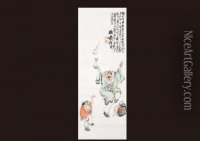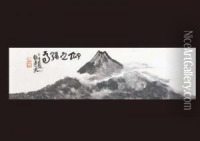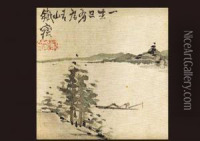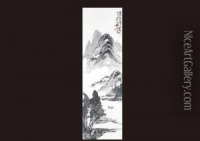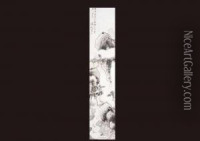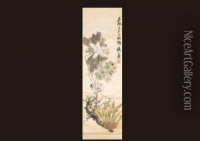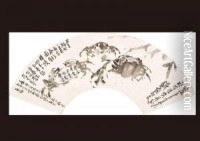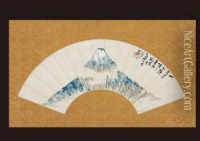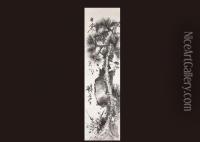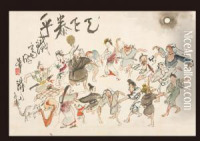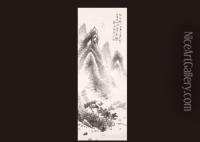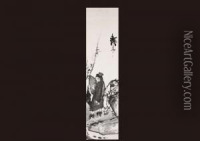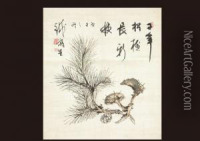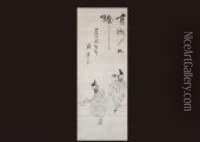Tomioka Hyakuren Tessai Paintings
Tomioka Tessai, also known as Hyakuren, was a Japanese painter and calligrapher from the Meiji period. Born in Kyoto to a samurai family, his given name was Yusuke. He was initially educated in the Confucian classics and showed a talent for painting and calligraphy at an early age. Tessai is often regarded as the last great master in the bunjinga tradition, a style of Japanese painting that incorporates Chinese literati painting ideals.
Tessai's early life was marked by the political turmoil of the Bakumatsu period, leading up to the Meiji Restoration. He was deeply influenced by the scholar and philosopher Ohashi Jozan, and later by the Shinto priest Hirata Atsutane. These intellectual influences combined with his artistic talents led Tessai to develop a distinctive style that blended traditional Japanese and Chinese elements.
Throughout his long career, Tessai traveled extensively throughout Japan, drawing inspiration from the country's landscapes and cultural heritage. His works often featured historical themes and were characterized by bold compositions and a vibrant use of color. Tessai's paintings were not only reflections of his own profound understanding of East Asian aesthetics but also his deep knowledge of history and literature.
In his later years, Tessai served as the Imperial Household's artist, a prestigious position that recognized his contribution to the Japanese art scene. He was also a prolific writer, penning numerous essays and commentaries on art and aesthetics. Tessai's legacy is preserved in his abundant works and his influence on subsequent generations of Japanese artists. He passed away in 1924, leaving behind a rich body of work that continues to be studied and admired for its unique blend of literati ideals and Japanese artistic traditions.
